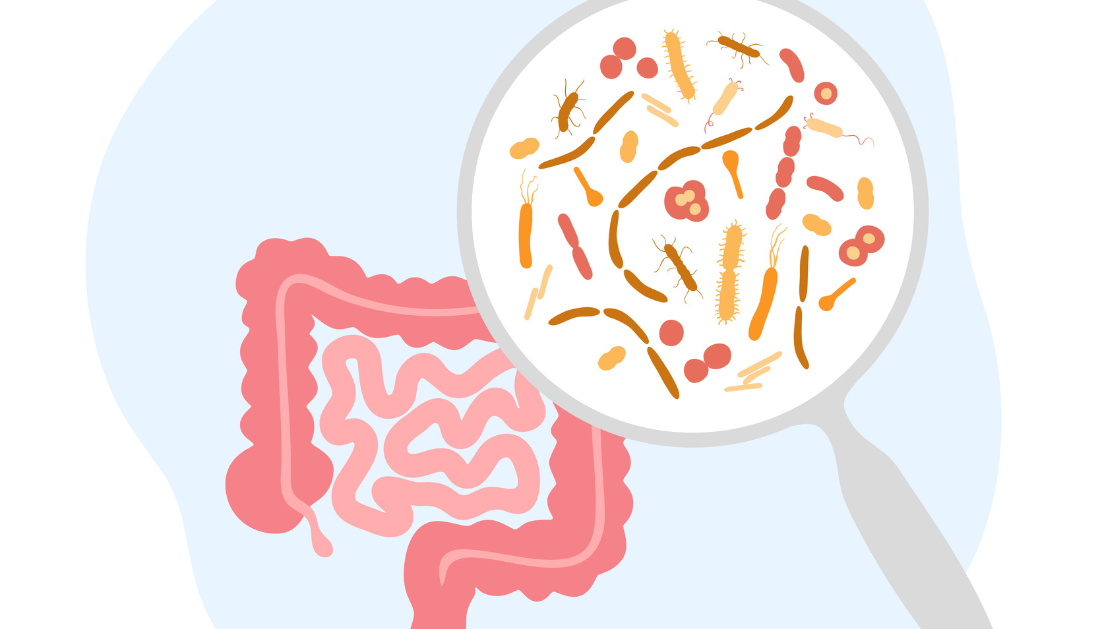

When it comes to Gut Health, The billions of bacteria that live in our stomachs are our lifelong companions, whether we are unwell or healthy. Scientists have demonstrated in recent decades how the characteristics of this “microbiome” might offer important hints about human illnesses and how to cure them.
According to a recent study from the Bork group at EMBL Heidelberg that was published in the journal Cell, the total number of microbes in the gut is influenced by a variety of factors, including lifestyle and illness. As a result, this often overlooked metric needs more analysis in the study of the gut microbiome.
From composition to loads
Researchers often concentrate more on microbial composition, or the proportion of various microbe species (mostly bacteria and archaea, but also protists, viruses, and other microorganisms), when examining microbiomes. This indicates, for instance, whether the amount of one species of bacteria in the guts of some disease patients increases or decreases in relation to other species.
Microbial load, on the other hand, refers to the number of bacteria found in our stomachs. Experimentally, it is calculated as the number of microbial cells per gram of feces. Unlike microbiological composition, this is an absolute quantity. Consider the following scenario: illness reduces the total number of bacteria to 500. Looking at the absolute figures, it is plausible that the number of red bacteria remained constant while the number of blue bacteria fell.
Scientists typically solely evaluate microbial composition while conducting microbiome investigations since existing experimental methods for assessing microbial loads are time and cost-intensive.
Using machine learning to make microbiome studies more robust
“We wanted to develop a new method that required no additional experimental methods to quantify microbial load,” said Suguru Nishijima, the study’s first author and a postdoc in the Bork Group. “We had access to large datasets with both microbial composition and experimentally measured microbial load data. We wanted to see if we could use these to train a machine learning model to estimate microbial load given microbial composition alone.”
The datasets for this experiment were obtained from the GALAXY/MicrobLiver and Metacardis consortia, two large-scale EU-funded initiatives to which the Bork Group has previously contributed. These data, collected from over 3,700 people, gave an excellent opportunity to see whether a machine-learning model could be trained to predict the overall number of microorganisms in a sample.
Indeed, Nishijima and his colleagues developed a model that could accurately predict microbial loads, which they validated with a novel dataset that the model had never encountered previously. Knowing that the model worked, the researchers applied it to a large sample of more than 27,000 people drawn from 159 prior studies conducted in 45 countries.
They discovered that numerous factors can affect microbial burden. For example, diarrhea can reduce the number of bacteria in the gut, whereas constipation might increase them. Women have a higher average microbial load than men (this may be related to the observation that women feel constipation more frequently than men), whereas young persons have a lower average microbial burden than the elderly. Many disorders and the medications used to treat them have a major impact on microbial load.
“Importantly, many microbial species previously thought to be associated with disease were more strongly explained by variations in microbial load. These findings suggest that changes in microbial load, rather than the disease itself, may be the driver of shifts in the microbiome in patients” said Nishijima. “However, certain disease-microbe associations remained, and this shows that these are truly robust. This further confirms the importance of including microbial load in microbiome association studies to avoid false positives or false negatives.”
Scientists can now include this essential factor in future gut microbiome investigations thanks to the novel machine learning model built by these researchers, which was the first to predict microbial loads from composition data. The model is freely and openly available to researchers worldwide for testing and usage.
This may have far-reaching effects beyond the gut microbiota.
Our oceans, soils, rivers – are all teeming with microbes, and understanding these microbiomes could yield valuable insights to help preserve our planetary health. This study shows us that microbial load is an important measure that must be taken into account in such studies. Thus, we will work towards translating the knowledge on the gut microbiome to other habitats.”
Peer Bork, Group Leader and Director at EMBL Heidelberg and the study’s senior author
For more information: Nishijima, S., et al. (2024). Fecal microbial load is a major determinant of gut microbiome variation and a confounder for disease associations. Cell. doi.org/10.1016/j.cell.2024.10.022.
more recommended stories
 Fat-Regulating Enzyme Offers New Target for Obesity
Fat-Regulating Enzyme Offers New Target for ObesityKey Highlights (Quick Summary) Researchers identified.
 Spatial Computing Explains How Brain Organizes Cognition
Spatial Computing Explains How Brain Organizes CognitionKey Takeaways (Quick Summary) MIT researchers.
 Gestational Diabetes Risk Identified by Blood Metabolites
Gestational Diabetes Risk Identified by Blood MetabolitesKey Takeaways (Quick Summary for Clinicians).
 Phage Therapy Study Reveals RNA-Based Infection Control
Phage Therapy Study Reveals RNA-Based Infection ControlKey Takeaways (Quick Summary) Researchers uncovered.
 Pelvic Floor Disorders: Treatable Yet Often Ignored
Pelvic Floor Disorders: Treatable Yet Often IgnoredKey Takeaways (Quick Summary) Pelvic floor.
 Urine-Based microRNA Aging Clock Predicts Biological Age
Urine-Based microRNA Aging Clock Predicts Biological AgeKey Takeaways (Quick Summary) Researchers developed.
 Circadian Control of Neutrophils in Myocardial Infarction
Circadian Control of Neutrophils in Myocardial InfarctionKey Takeaways for HCPs Neutrophil activity.
 E-Cigarette Use and Heart Attack Risk in Former Smokers
E-Cigarette Use and Heart Attack Risk in Former SmokersKey Takeaways for Clinicians and Nurses.
 High-Intensity Training and Oxidative Stress Insights
High-Intensity Training and Oxidative Stress InsightsNew Evidence Linking High-Intensity Training and.
 36-Week Pre-eclampsia Screening May Reduce Term Risk
36-Week Pre-eclampsia Screening May Reduce Term RiskA New Preventive Strategy for Term.

Leave a Comment